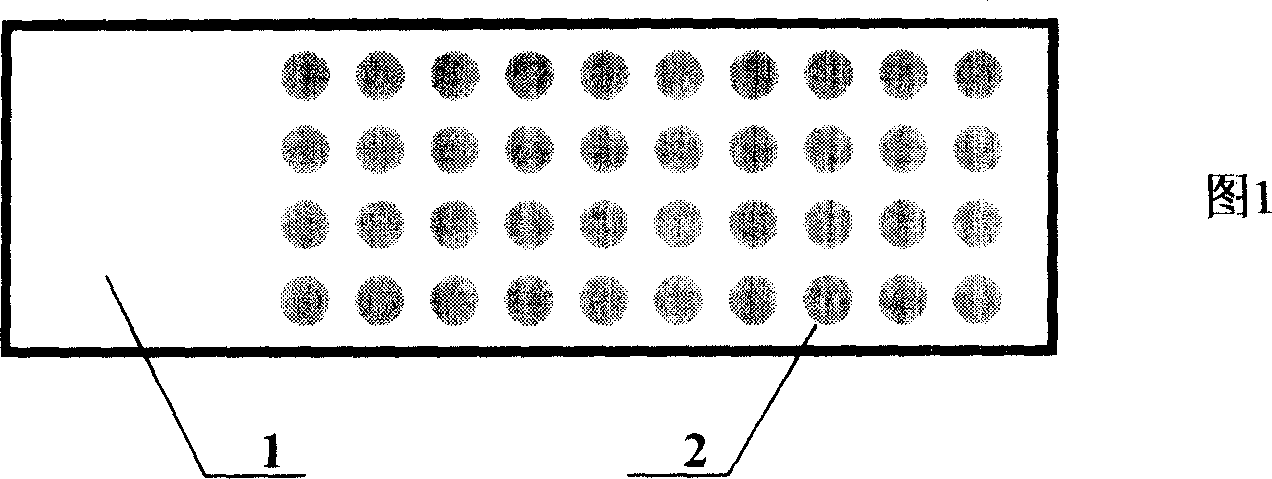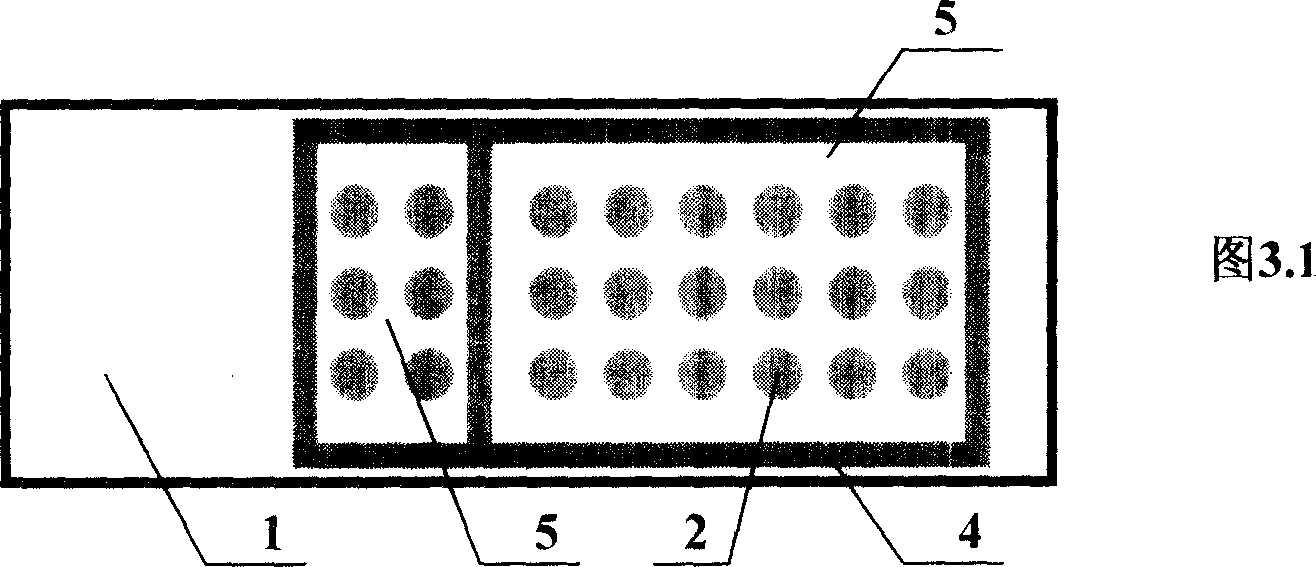Cellular biological technique, reagent kits and preparation device
A kit and cell technology, applied in the direction of biological testing, preparation of test samples, biochemical equipment and methods, etc., can solve problems that are difficult to distinguish, cumbersome and complicated, and difficult to carry out at the same time
- Summary
- Abstract
- Description
- Claims
- Application Information
AI Technical Summary
Problems solved by technology
Method used
Image
Examples
Embodiment I
[0089] Example I: Application in monoclonal antibody development.
[0090] In the research of mouse monoclonal antibodies, it is usually necessary to identify the tissue and cell distribution of the antigen target molecules recognized by the antibodies, such as various receptor molecules or CD molecules on the cell surface, etc. The specific operation steps in the implementation are as follows:
[0091] 1. Glass slide treatment: Strictly cleaned glass slides were dipped in xylene, then rinsed with 70% ethanol and dried; -Aminopropyltriethoxysilane) for 30 seconds, rinse with anhydrous acetone and distilled water sequentially, and dry.
[0092] 2. Loading the slides: Put the processed glass slides into the grooves of the bottom tray of the cell sheet preparation device, followed by the sealing gasket / ring, the through-hole plate, and then tighten the fastening device for later use.
[0093] 3. Preparation of cell sheets: inoculate the adherent growth of different human tumor c...
Embodiment II
[0099] Example II: Application in prenatal and postnatal care.
[0100] The expression of eukaryotic genes and viral proteins in prokaryotic host cells is efficient and inexpensive. However, the expressed proteins often have low or no activity due to incorrect folding or low efficiency. In particular, post-translational processing and modification of proteins cannot be carried out by prokaryotic cells at all. Rubella virus, cytomegalovirus, herpes simplex virus, coxsackie virus and Toxoplasma gondii are the main pathogens that cause intrauterine infection and fetal malformation; hepatitis B, syphilis and AIDS are infectious diseases that can cause neonatal infection through vertical transmission causative agent of disease. Therefore, the detection and diagnosis of the above pathogenic infection in reproductive age and pregnant women has become an important means to prevent congenital malformations and neonatal infections. The specific steps in the implementation are as foll...
Embodiment III
[0107] Example III: Use in in situ hybridization.
[0108] In situ hybridization experiment is the most commonly used technical method in molecular biology, tissue and pathology research, especially in gene expression regulation and tissue cell localization. The specific operation steps in the implementation are as follows:
[0109] 1. Take the cell sheets treated with DEPC-PBS (phosphate buffered saline prepared with DEPC-treated double-distilled water) and treat them with Triton-X100 for 15 minutes. After washing with DEPC-PBS for 25 minutes, use RNase-free proteinase K. Or pepsin was incubated at 37°C for 10-30 minutes, rinsed with glycine PBS or DEPC-PBS, fixed with paraformaldehyde, rinsed with DEPC-PBS, incubated with acetic anhydride triethanolamine solution, and washed with 2xSSC for 3 minutes;
[0110] 2. Use random primers, nick translation or PCR to label or prepare probes;
[0111] 3. Incubate with probe-free oligonucleotide probe hybridization buffer at 37°C for ...
PUM
 Login to View More
Login to View More Abstract
Description
Claims
Application Information
 Login to View More
Login to View More - R&D
- Intellectual Property
- Life Sciences
- Materials
- Tech Scout
- Unparalleled Data Quality
- Higher Quality Content
- 60% Fewer Hallucinations
Browse by: Latest US Patents, China's latest patents, Technical Efficacy Thesaurus, Application Domain, Technology Topic, Popular Technical Reports.
© 2025 PatSnap. All rights reserved.Legal|Privacy policy|Modern Slavery Act Transparency Statement|Sitemap|About US| Contact US: help@patsnap.com



